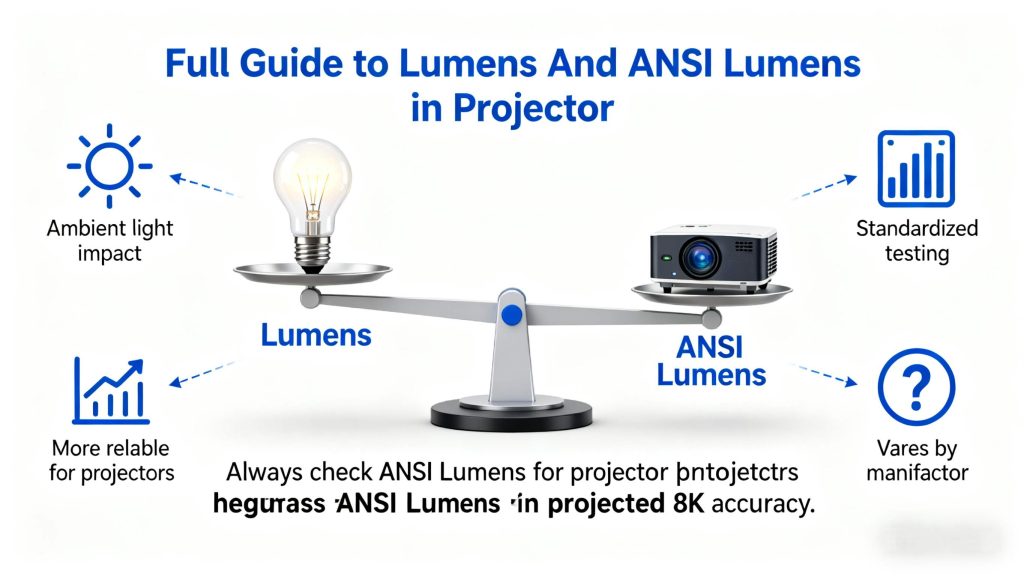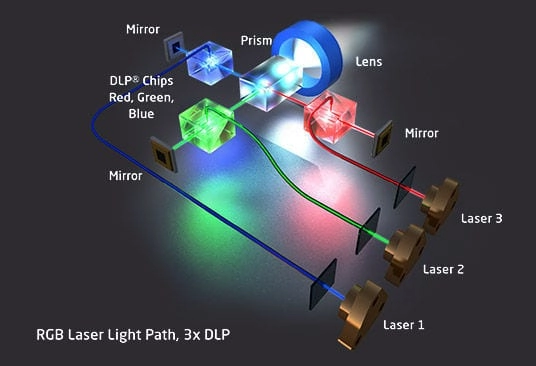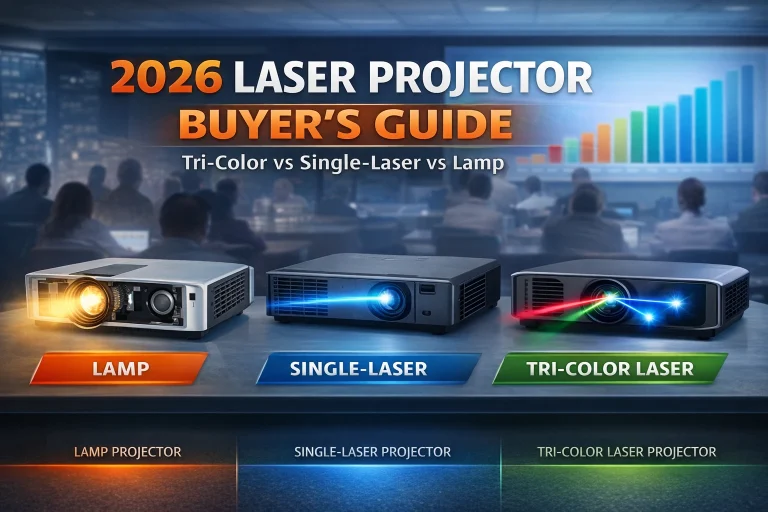What Are Lumens and ANSI Lumens?
Ever checked out a projector and seen “lumens” or “ANSI lumens” thrown around? Let’s unpack it. Lumens tell you how much light a projector spits out. It’s a neat trick to figure out brightness, whether you’re kicking back with a film in a dim room or showing slides in a bright office. More lumens mean a sharper, livelier picture—simple as that.
Then you’ve got ANSI lumens, a stricter rule set by the American National Standards Institute. They test brightness by checking nine spots on the screen and averaging it. This beats just slapping a random number on the box. It deals with patchy light like a champ. So, when you spot “ANSI lumens” on a sheet, you’re looking at a real, steady number—not some puffed-up sales pitch.

Why Brightness Counts
Picture this: you’re setting up for a cozy family movie night. A little light creeps in, and the screen turns pale. Ugh, right? That’s where lumens save the day. A projector with low lumens—maybe under 500—fades fast unless it’s pitch black. Push it to 2000 lumens or more, and you can handle daylight. For home vibes, 1500-3000 lumens feels just right. Want to nail a presentation? Go for 3000-4000 lumens to keep it clear.
Brightness isn’t just about seeing. It jazzes up colors too. Dim light can wash them out, making everything blah. But a good lumen count pulls out deep blues and warm reds. It turns a ho-hum setup into something special. Nailing this can make all the difference.
Diving Deeper into Lumens
How Lumens Get Measured
Trying to measure lumens might sound tricky, but it’s grounded in real life. A light meter grabs the total glow a projector puts out. Makers test in quiet, dark rooms with set screens. Here’s the catch: not all play by the rules. Some jack up numbers to catch your eye. That’s why ANSI lumens step in to keep it honest.
Think about this: two projectors get tested. One hypes 3000 lumens from a quick check, while another, run through ANSI, hits 2800 lumens. The second one’s likely truer. Over time, folks in the know have trusted ANSI to sift through the hype.
Factors That Mess with Lumen Output
Lumens don’t stay put—they shift with a few things. Lamp age is a big one. A projector’s bulb dims over time, maybe dropping 20-30% after 2000 hours. Then there’s throw distance—how far it sits from the screen. Too close or too far, and the light spreads thin, dulling the view. Ambient light sneaks in too. A sunny room can overpower even a 4000-lumen beast.
Resolution matters as well. Jumping from 720p to 1080p or 4K splits the light over more pixels, softening the brightness a bit. It’s a swap—clearer images might mean a fainter glow. Pretty odd how that plays out, huh?
Lamp age cuts brightness over time.
Throw distance changes how light spreads.
Ambient light can outshine the projector.
Higher resolution might dim the picture.
ANSI Lumens: The Industry Benchmark
What Makes ANSI Lumens Stand Out
ANSI lumens aren’t just a cool label—they shake up the game. The nine-point check sweeps across the whole screen, not just the middle. It catches bright spots or dark edges a single test might miss. It’s like ensuring every part of your dinner cooks right, not just the center.
Data backs this. Industry studies show ANSI projectors often trim 10-15% off lumen claims compared to others, matching real use. For buyers, that means no chasing wild dreams. It’s a small thing, but it builds trust step by step.
Comparing Lumens and ANSI Lumens
So, what’s the real difference? A projector boasting 3500 lumens might drop to 3000 ANSI lumens after a test. That 500-lumen gap feels big in a bright room. Home theater lovers might not care—1000 ANSI lumens still shine in the dark. But pros needing clear views in lit spaces lean on ANSI numbers to dodge trouble.
Here’s a quick look:
Home Theater: 1000-2000 ANSI lumens work in dark rooms.
Classroom/Living Room: 2000-3000 ANSI lumens handle some light.
Office Presentation: 3000-4000 ANSI lumens keep it crisp.
Outdoor Use: 4000+ ANSI lumens beat daylight.
Practical Tips for Picking Lumens
Matching Lumens to Your Spot
Picking lumens depends on where you’ll use it. A snug basement movie setup? 1500 ANSI lumens might cut it. Hosting a chat in a sunny hall? You’ll need 4000 or more. It’s about reading the room.
Take this: a teacher I know uses a 2500 ANSI lumen projector with big windows. She pulls the blinds halfway, and the picture pops. Without that, she’d squint at a faint image. Test your space with a flashlight—mimic the light and see what sticks.
Balancing Brightness with Other Stuff
Lumens aren’t everything. A high-lumen model might gulp power or heat up fast, shortening its life. Contrast ratio—how deep the blacks get—counts too. A 2000-lumen unit with a 10,000:1 contrast beats a 3000-lumen one with 1000:1 in dark scenes. Add portability or battery life, and you’ve got choices to weigh. Pick what fits your style.
High lumens can drain power.
Contrast boosts dark scenes.
Portability adds flexibility.
Battery life extends use.
About Toumei Projector as a Projector Supplier

Toumei Projector stands tall as a solid name in the projector world, built on years of hands-on know-how. Based in Shenzhen, this crew has been crafting top-notch gear since 2013, blending new tech with clever design. They dig deep into R&D, holding over 100 patents, and deliver solutions that hit the mark. Whether it’s for home fun or pro jobs, they’ve got the chops to back it up.
Conclusion
Wrapping up, lumens and ANSI lumens are your keys to a great projector feel. Knowing the difference helps you pick the right brightness for any spot, from quiet movie nights to busy boardrooms. It’s not just numbers—it’s about watching the picture come alive. Check your needs, test the space, and you’ll find the perfect fit.




